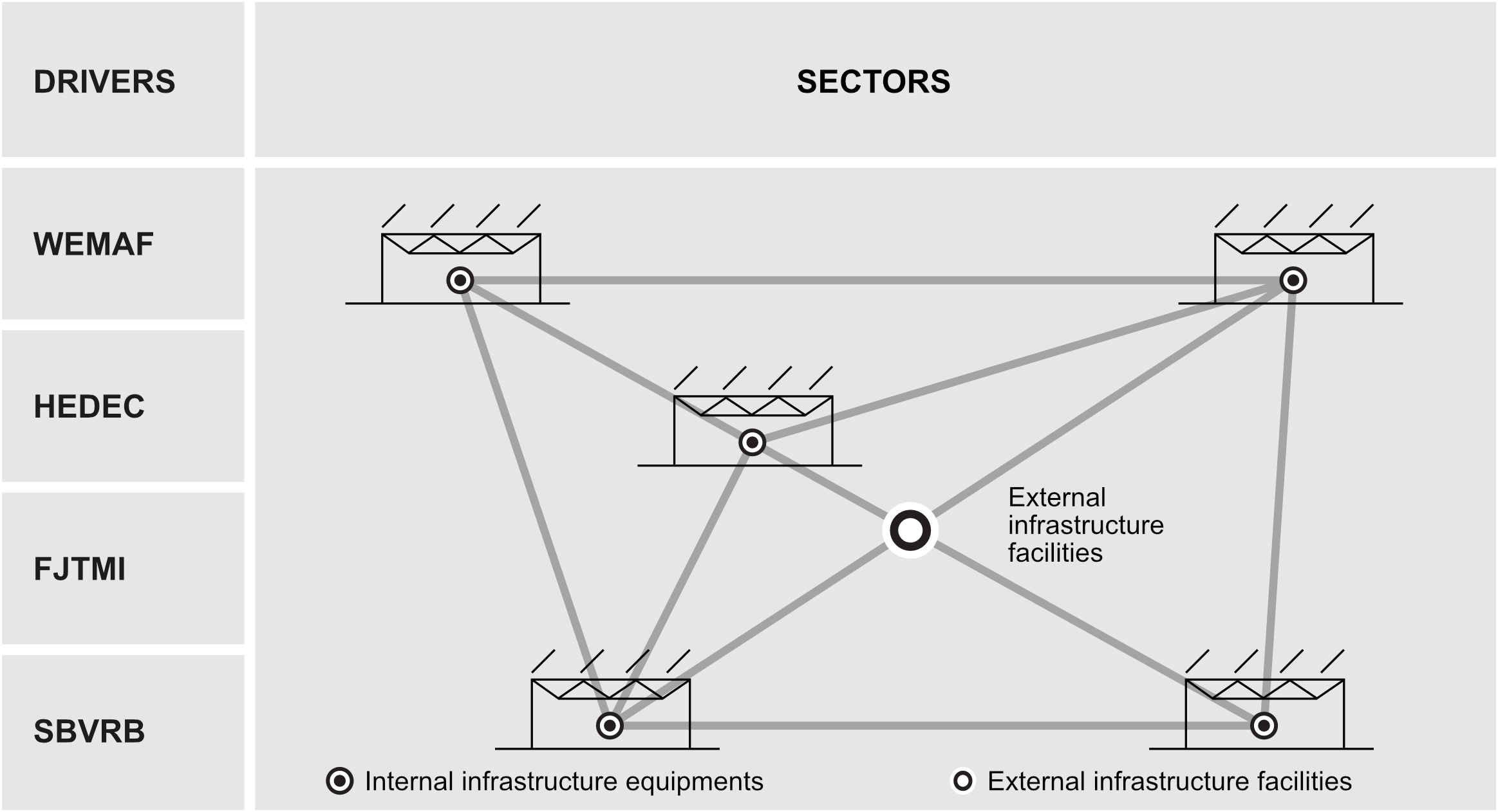E5. Sustainable Development Goals, SDG Environment
The following Figures introduce the content of the future Chapter E, which is under preparation. Figure Ex2 Demonstrates (indicates) the relationships between SPC Drivers and the UN Sustainable Development Goals (SDG) in the climate change environment and other influencers on the organizations and projects and their relationship on the global level.
It is an example of clashes between the spontaneous settlement of the surroundings, vast cities, and megacities (including the slums), with modern urbanism and architecture of the traditional style of life colored by the local atmosphere. These clashes are based on consistent principles reflecting the reality of the expansion of the Human around the world.
Figure Ex3 transforms Table E1 into the shape of a matrix absorbing the content of the UN SDG. It demonstrates a potential for developing the statistical description (model) of links among drivers and goals of the development on the global level. It is about the housing philosophy and its reality. What does it mean to have a housing unit in the countryside, or to live in a colony of houses, also out of town, in an open country, e.g., in Africa?
Figure Ex4 introduces the role of the SPC Drivers for the broad spectrum of SED, DRR, and HA projects worldwide. It is about the universality of a model in a distributed data environment standardized on the level of the inputs and outputs of data processes (how to prepare a project and how to implement it).
What exists in situ, what urbanism was based on, and how to prepare and implement the future steps for the resettlement, which is just now behind the door. It is about the data processes that reflect the fuzzy data environment. Competition in situ reflects the broad spectrum of experience in worldwide SED, DRR, and HA projects preparation, implementation, and operation.
But the priority is the success of each project (its Efficiency, Effectiveness, and Economy) in situ. Therefore, problem-solving is about understanding the distribution of operations on segments (as the holistic apps) for the sustainable and still-in-development local life in situ (e.g., for families at home and all with the satisfaction with functional infrastructure for life, entrepreneurship, entertainment, etc.).
Project and statistical data have different aims, and so form other structures. Statistical data should reflect the content of the most critical milestones and work packages. It is also valid for all four cases above. The problem of camp refugees and the growing crisis of worldwide migration (e.g., via climate change impacts) are the most actual issues.
Figure Ex5 indicates it. It is not only about the statistical data addressed to the local and global statistical goals; at present, the most critical are concrete solutions that are in hand. Not only are social and economic characteristics crucial, but primarily physical actions, which will contain promising sustainable content (project's scope) and offer each development for future needs, are welcomed.
Figure Ex.2 Opportunities for the development of the OMU in peri-urban and rural areas
Figure Ex.3 OMU roles in the central municipal and rural areas
Figure Ex.4 OMU roles in the line municipal and rural areas
Figure Ex.5 OMU roles in the camps of the special humanitarian areas
Figure Ex6 has the link to the Figures above. It introduces the model of the OMU units as a standard product of the SPC Utility services on the territory of a province and in the environment of the SPC Drivers. The more complex tasks of local development and its safety are in the care of the Local Government Units (LGU) on the province territory under the umbrella of the relevant national (state) policy.
It illustrates opportunities for the distributed arrangement of drivers in projects into never-ending groups (in a spectrum of investment demand) of services of an SPC Utility in a specific province and other benefits of a network of SPC Utilities worldwide.
Figure Ex.6 Open Multifunctional Unit (OMU)
Figure Ex7 opens the role of standardization of components of the OMU for the internal and external needs of building structures and settlements development on a province territory and for other localities of more provinces using services of the SPC Utility and SPC drivers. It is about the involvement of jobs opportunities via Agro-industrial Zones (AIZ), Micro, Small, and Medium Enterprises (MSME), Services & Entertainment (education, healthcare, sports), and dwellings (different types of traditional architecture or standardized buildings for different purposes).
Figure Ex.7 Model for an internal and external infrastructure of a network of OMU units
The figure illustrates standardization and industrial production opportunities for a network of construction of Open Modular Units (OMU) for critical situations in low-income provinces worldwide.





